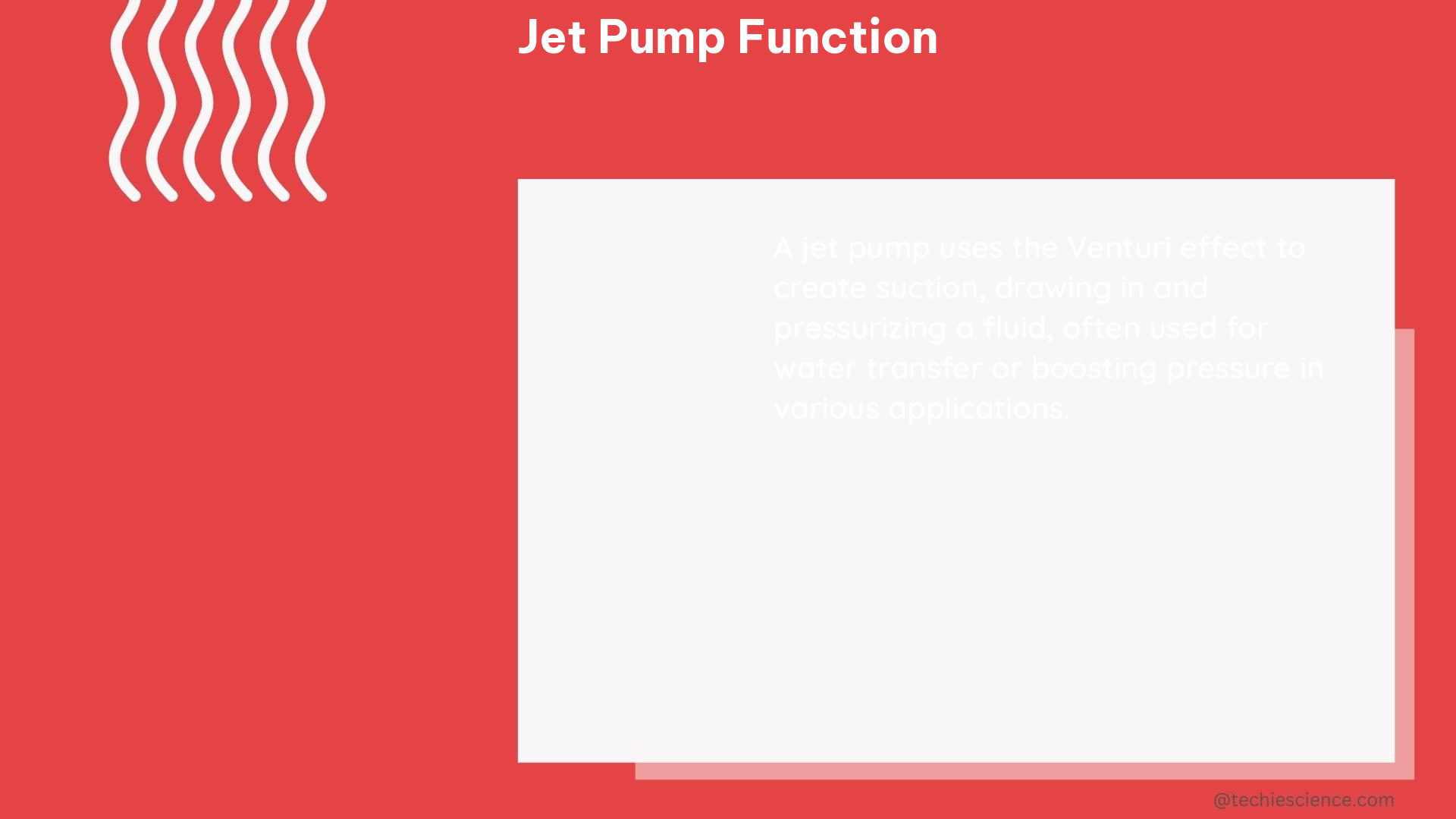Jet pumps are a versatile and efficient type of artificial lift system that utilize high-pressure fluid to create a low-pressure zone, enabling the lifting of fluids from a lower to a higher elevation. Understanding the intricate function of jet pumps is crucial for optimizing their performance, troubleshooting issues, and ensuring their reliable operation. In this comprehensive guide, we will delve into the key data points and technical details that define the function of jet pumps.
Flow Rate: The Lifeblood of Jet Pump Performance
The flow rate of a jet pump is a critical parameter that determines its ability to lift fluids. This metric, typically measured in gallons per minute (GPM) or cubic meters per hour (m³/h), represents the volume of fluid that the pump can handle per unit of time. A higher flow rate generally indicates a more powerful and efficient jet pump, capable of handling larger volumes of fluid. However, it is essential to ensure that the flow rate does not exceed the pump’s maximum capacity, as this can lead to cavitation and other performance issues.
Pressure Drop: The Balancing Act

The pressure drop across a jet pump, measured in pounds per square inch (psi) or pascals (Pa), is the difference in pressure between the inlet and outlet of the pump. This pressure drop is a crucial factor in determining the pump’s efficiency and the amount of energy required to operate it. A lower pressure drop typically indicates a more efficient jet pump, as it requires less energy to lift the fluid. Optimizing the pressure drop can be achieved through careful design and configuration of the pump’s components, such as the nozzle and diffuser.
Efficiency: Maximizing the Output
The efficiency of a jet pump is the ratio of the useful work done by the pump to the energy input, typically expressed as a percentage or a dimensionless quantity. A higher efficiency means that the pump is converting a greater proportion of the input energy into useful work, resulting in a more cost-effective and environmentally friendly operation. Improving the efficiency of a jet pump can be accomplished through techniques such as using a swirling primary jet, which can enhance the entrainment and mixing of the fluid.
Net Positive Suction Head Required (NPSHr): Preventing Cavitation
The net positive suction head required (NPSHr) is the minimum pressure required at the inlet of the jet pump to prevent cavitation, a phenomenon where the fluid experiences a phase change and forms vapor bubbles. Cavitation can lead to reduced pump performance, increased wear and tear, and even damage to the pump components. NPSHr is typically measured in feet or meters of liquid column. Ensuring sufficient inlet pressure or reducing the flow rate can help mitigate the risk of cavitation and maintain the jet pump’s optimal performance.
Head Loss: Overcoming Resistance
Head loss, measured in feet or meters of liquid column, refers to the loss of energy due to friction, turbulence, and other factors as the fluid flows through the jet pump and its associated piping. Minimizing head loss is crucial for maximizing the pump’s efficiency and reducing the power consumption required to operate it. Strategies to reduce head loss include using shorter and smaller-diameter piping, implementing smooth and straight pipe runs, and avoiding sharp bends or elbows.
Power Consumption: Balancing Energy Needs
The power consumption of a jet pump, typically measured in watts or horsepower, represents the amount of electrical or mechanical energy required to operate the pump. Optimizing power consumption is essential for reducing operating costs and minimizing the environmental impact of the pump’s operation. Factors such as pump efficiency, flow rate, and pressure drop can all influence the power consumption of a jet pump.
Pumping Capacity: Defining the Limits
The pumping capacity of a jet pump, measured in GPM or m³/h, represents the maximum flow rate that the pump can handle. This parameter is crucial in selecting the appropriate jet pump for a specific application, ensuring that the pump can meet the required fluid handling needs. Exceeding the pumping capacity can lead to performance issues, while operating the pump well below its capacity may result in inefficient operation.
By understanding and optimizing these key data points and technical details, you can ensure the efficient and reliable operation of your jet pump systems. Leveraging real-time data analysis can further enhance the performance of hydraulic jet pump systems, enabling improved production optimization, enhanced system reliability, and reduced operational costs.
References:
- Improving the efficiency of a jet pump using a swirling primary jet, ResearchGate, https://www.researchgate.net/publication/234916183_Improving_the_efficiency_of_a_jet_pump_using_a_swirling_primary_jet
- Jet Pump NPSHr Data 4 – Eng-Tips, Eng-Tips, https://www.eng-tips.com/viewthread.cfm?qid=502163
- Research on the Law of Head Loss of Jet Pumps in the Cavitation, ACS Omega, https://pubs.acs.org/doi/10.1021/acsomega.1c06895
- Real-Time Data Analysis for Hydraulic Jet Pump Systems, LinkedIn, https://www.linkedin.com/advice/3/how-can-real-time-data-analysis-optimize-hydraulic-jet-pump-system-performance-mzp2c?trk=public_post_main-feed-card_feed-article-content
- A Study of Micro-Scale Jet Pumps, DSpace@MIT, https://dspace.mit.edu/bitstream/handle/1721.1/87239/51440744-MIT.pdf?sequence=2

The lambdageeks.com Core SME Team is a group of experienced subject matter experts from diverse scientific and technical fields including Physics, Chemistry, Technology,Electronics & Electrical Engineering, Automotive, Mechanical Engineering. Our team collaborates to create high-quality, well-researched articles on a wide range of science and technology topics for the lambdageeks.com website.
All Our Senior SME are having more than 7 Years of experience in the respective fields . They are either Working Industry Professionals or assocaited With different Universities. Refer Our Authors Page to get to know About our Core SMEs.